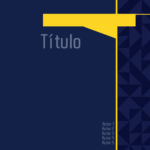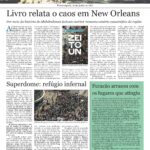The Rococo Art Movement, known for its ornate and playful aesthetic, emerged in early 18th-century France as a reaction to the grandeur and formality of Baroque art. Characterized by intricate details, soft pastel colors, and themes of romance and leisure, Rococo quickly spread across Europe, influencing painting, architecture, music, literature, and even fashion.
The movement found its peak during the reign of King Louis XV, flourishing between 1730 and 1770. Unlike the Baroque period, which focused on religious and dramatic themes, Rococo embraced a more intimate, whimsical, and decorative approach. Its leading artists and thinkers, such as Jean-Antoine Watteau, François Boucher, and Jean-Honoré Fragonard, captured scenes of aristocratic leisure, fantasy, and mythology, making the style synonymous with refinement and pleasure.
However, as the political and social climate changed towards the end of the 18th century, the Rococo style faced criticism for its excessive ornamentation and lack of seriousness. It gradually gave way to the more structured and classical approach of Neoclassicism. Despite this, Rococo remains an essential chapter in art history, celebrated for its elegance and charm.
Rococo in Painting
Rococo painting was a direct departure from the dramatic and dark compositions of Baroque art. Instead, it embraced lightness, movement, and a sense of playful indulgence. Artists often depicted scenes of aristocratic leisure, romance, and mythological fantasy with a dreamy, almost theatrical quality.
Jean-Antoine Watteau is often credited with pioneering Rococo painting, particularly with his “fêtes galantes” – elegant, pastoral scenes of nobility enjoying music, dance, and courtship in lush gardens. His painting Pilgrimage on the island of Cythera (1717) exemplifies this style, portraying lovers in an enchanted, utopian setting.
François Boucher, another significant figure in Rococo painting, was known for his sensual and decorative approach. His works, such as The Toilette of Venus (1751), often depicted gods and goddesses in playful, intimate settings, emphasizing beauty and frivolity.
Jean-Honoré Fragonard continued this tradition with works like The Swing (1767), a masterpiece that captures the essence of Rococo—soft pastels, graceful movement, and an air of romantic mischief.
Rococo in Music
Rococo music, sometimes referred to as the “galant style,” reflected the movement’s lightness and grace. It moved away from the complex counterpoint of Baroque compositions, favoring elegant, expressive melodies and simpler harmonies.
Composers such as François Couperin and Jean-Philippe Rameau incorporated ornamental flourishes and fluid phrasing into their music, creating a sound that mirrored the visual aesthetics of Rococo. In Germany, Carl Philipp Emanuel Bach, son of Johann Sebastian Bach, became a key figure in the “Empfindsamer Stil” (Sensitive Style), which emphasized emotional expressiveness—a precursor to the Classical period.
Rococo music often featured harpsichord and delicate orchestration, with an emphasis on ornamentation. Opera also embraced the Rococo style, with composers like Christoph Willibald Gluck refining the dramatic structure and making it more lyrical and expressive.
Rococo in Fashion
Fashion during the Rococo period was as extravagant and elaborate as its art. Aristocrats, particularly in the French court, embraced luxurious fabrics, pastel colors, and elaborate embroidery. Women’s fashion included wide pannier skirts, delicate lace, and intricate floral designs, while men wore embroidered coats, silk waistcoats, and powdered wigs.
One of the most iconic figures of Rococo fashion was Marie Antoinette, who popularized the “robe à la française” with its flowing silhouettes, ruffles, and opulent accessories. The movement’s emphasis on beauty and elegance extended even to accessories, with fans, gloves, and jewelry playing an essential role in the aristocratic wardrobe.
However, by the late 18th century, as societal attitudes shifted, the extravagance of Rococo fashion was criticized for its excess. The French Revolution ultimately marked the end of this luxurious style, paving the way for the more restrained fashions of the Neoclassical era.
Rococo in Architecture
Rococo architecture was an extension of the Baroque style but with a more delicate and decorative approach. It emphasized asymmetry, curving forms, and elaborate ornamentation, often incorporating gilded moldings, stucco decorations, and pastel-colored interiors.
Notable examples of Rococo architecture include the Amalienburg Pavilion in Munich, designed by François de Cuvilliés, which features an exquisite blend of silver and blue décor, curved mirrors, and intricate ceiling frescoes. The Sanssouci Palace in Potsdam, built for Frederick the Great of Prussia, also showcases the refined elegance of Rococo design, with its light-filled rooms and intricate detailing.
Churches also adopted the Rococo style, especially in Southern Germany and Austria. The Wieskirche in Bavaria, designed by Dominikus Zimmermann, exemplifies this with its light, ethereal interior, elaborate stucco work, and soft color palette.
While Rococo architecture was often criticized for its excessive ornamentation, it remains an essential influence in interior design, inspiring later movements that sought to balance opulence with elegance.
Rococo in Literature
Rococo literature mirrored the movement’s themes of romance, pleasure, and playful wit. Writers often focused on lighthearted stories, flirtation, and social satire, reflecting the aristocratic culture of the time.
French playwright Pierre de Marivaux became famous for his romantic comedies, which explored themes of love and deception with refined, sophisticated dialogue. His works, such as The Game of Love and Chance (1730), captured the Rococo spirit through elegant wordplay and social intrigue.
Voltaire, though critical of the excesses of the aristocracy, also contributed to the style literature with his sharp wit and satirical take on society. His novella Candide (1759) humorously critiques the optimism of the time while still embracing the elegant storytelling associated with the movement.
In poetry, the style influence can be seen in the works of Alexander Pope, who used refined, ornamental language and clever satire to depict the manners and attitudes of high society.
The Rococo Art Movement was a celebration of beauty, elegance, and indulgence. From painting and music to fashion and architecture, it left an undeniable mark on European culture. Though criticized for its frivolity and excess, its legacy continues to inspire modern design and artistic expression.
Today, Rococo is admired for its dreamy aesthetics and intricate craftsmanship, proving that art does not always need to be serious to be meaningful. Its delicate charm and refined sensibility remind us of the importance of joy, romance, and artistic freedom.





1 comentário em “2025InArt #03 – Rococo”